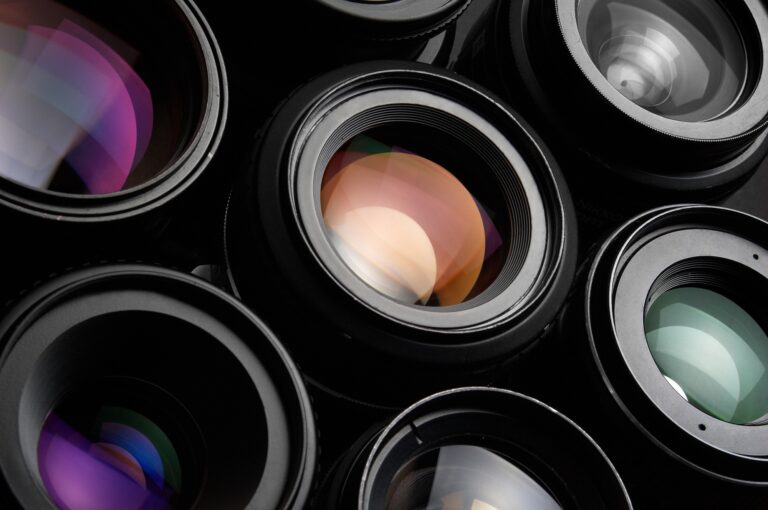The General Data Protection Regulation (GDPR) has transformed the landscape of data privacy since its implementation in May 2018. As we step into 2024, the intersection of GDPR and video production continues to evolve, presenting unique challenges and opportunities for content creators, marketers, and legal teams alike.
This comprehensive guide delves into the nuances of GDPR and Video Production compliance, offering insights into best practices, emerging trends, and practical strategies for navigating this complex regulatory environment.
Understanding GDPR: A Brief Overview
GDPR and video production are regulations by the European Union (EU) aimed at protecting the personal data and privacy of EU citizens. It applies to all organizations that process the personal data of individuals within the EU, regardless of where the organization is based. Key principles of GDPR include:
- Lawfulness, Fairness, and Transparency: Data must be processed lawfully, fairly, and transparently.
- Purpose Limitation: Data should be collected for specified, explicit, and legitimate purposes.
- Data Minimization: Data collected should be adequate, relevant, and limited to what is necessary.
- Accuracy: Data should be accurate and kept up to date.
- Storage Limitation: Data should be kept in a form that permits the identification of data subjects for no longer than necessary.
- Integrity and Confidentiality: Data should be processed securely.
- Accountability: Organizations must take responsibility for complying with GDPR and be able to demonstrate their compliance.
GDPR and Video Production: Key Considerations
Consent and Transparency
One of the foundational aspects of GDPR compliance in video production is obtaining explicit consent from individuals featured in the videos. This means informing them about the purpose of the video, how their data will be used, and their rights under GDPR. Consent must be:
- Freely Given: Individuals should have a genuine choice without coercion.
- Informed: They must be provided with clear and comprehensive information about the data processing activities.
- Specific: Consent must be obtained for distinct purposes.
- Unambiguous: It should be clear that the individual agrees to the data being processed.
Handling Personal Data
Personal data in video production can include a wide range of information, from the obvious (names, faces) to the less obvious (backgrounds, voice). GDPR requires careful consideration of how this data is handled:
- Data Minimization: Only collect and use data necessary for production.
- Anonymization and Pseudonymization: Where possible, anonymize or pseudonymize data to protect individuals’ identities.
- Secure Storage and Transfer: Implement robust security measures to protect data during storage and transfer.
Data Subject Rights
GDPR grants several rights to data subjects that video producers must respect:
- Right to Access: Individuals can request access to their data.
- Right to Rectification: They can request corrections to inaccurate data.
- Right to Erasure: Also known as the “right to be forgotten,” individuals can request the deletion of their data.
- Right to Restrict Processing: They can request limited processing of their data.
- Right to Data Portability: Individuals can request their data in a portable format.
- Right to Object: They can object to data processing based on specific grounds.
Practical Strategies for GDPR Compliance in Video Production
Pre-Production Planning
Conducting a Data Protection Impact Assessment (DPIA)
A DPIA helps identify and mitigate privacy risks before starting a video project. It involves:
- Mapping Data Flows: Identify where personal data will be collected, stored, and processed.
- Assessing Risks: Evaluate the potential impact on individuals’ privacy.
- Implementing Controls: Put measures in place to mitigate identified risks.
Obtaining Informed Consent
Develop clear consent forms that outline:
- The purpose of the video.
- How and where will the video be used?
- The data subject’s rights under GDPR.
Ensure that consent is recorded and stored securely.
Production Phase
Minimizing Data Collection
- Avoid capturing unnecessary personal data.
- Use techniques such as blurring or cropping to exclude non-consenting individuals or sensitive information.
Secure Handling of Data
- Use encrypted storage devices for video footage.
- Limit access to the footage to authorized personnel only.
Post-Production and Distribution
Editing for Privacy
- Remove or anonymize personal data where feasible.
- Use editing tools to blur faces or mute audio that contains personal information.
Secure Distribution Channels
- Use secure platforms for sharing and distributing videos.
- Implement access controls to ensure only authorized viewers can access the content.
Emerging Trends in GDPR and Video Production
AI and Facial Recognition
The rise of artificial intelligence (AI) and facial recognition technology presents both opportunities and challenges for GDPR compliance in video production:
- Enhanced Editing Capabilities: AI can help automate the anonymization process by detecting and blurring faces.
- Privacy Risks: Facial recognition technology can lead to unintended privacy violations if not used responsibly. Ensure AI tools comply with GDPR principles.
Live Streaming
Live streaming adds complexity to GDPR compliance due to the real-time nature of the content:
- Consent Challenges: Obtaining consent from all participants in a live stream can be difficult. Inform viewers and participants about the live stream and their rights.
- Moderation and Monitoring: Implement real-time moderation tools to address privacy concerns during the live stream.
Cross-Border Data Transfers
Video production often involves cross-border data transfers, which require additional considerations under GDPR:
- Standard Contractual Clauses (SCCs): Use SCCs to ensure data transferred outside the EU complies with GDPR.
- Third-Party Service Providers: Ensure third-party service providers handling data comply with GDPR.
Case Studies: GDPR Compliance in Action
Corporate Video Production
A multinational corporation planned to create a promotional video featuring employees from various EU countries. They conducted a DPIA to assess privacy risks, obtained informed consent from all participants, and used secure storage and editing practices. By following these steps, they ensured GDPR compliance while producing an engaging promotional video.
Educational Content Creation
An online education platform created video tutorials featuring instructors and students. They implemented anonymization techniques, such as blurring faces and altering voices, to protect individuals’ identities. Additionally, they used secure platforms for distributing the videos to their audience, maintaining GDPR compliance throughout the process.
Challenges and Solutions in GDPR Compliance
Balancing Creativity and Privacy
Creative freedom in video production can sometimes clash with privacy requirements. Finding a balance is crucial:
- Innovative Editing Techniques: Use creative editing techniques to comply with GDPR without compromising the video’s quality and message.
- Clear Communication: Educate the creative team about GDPR requirements to ensure compliance without stifling creativity.
Keeping Up with Regulatory Changes
GDPR is not static, and staying updated with regulatory changes is essential:
- Regular Training: Conduct regular training sessions for the team to stay informed about the latest GDPR updates.
- Consult Legal Experts: Work with legal experts to interpret and implement new regulations effectively.
The Future of GDPR and Video Production
Technological Advancements
Emerging technologies will continue to shape the future of GDPR compliance in video production:
- Advanced Anonymization Tools: New tools will make anonymization more efficient and effective.
- Enhanced Consent Mechanisms: Technology will simplify obtaining and managing consent from individuals.
Evolving Regulatory Landscape
GDPR will likely evolve to address new challenges and technologies:
- Adapting to AI and Big Data: Regulations may become more specific about the use of AI and big data in video production.
- Strengthening Cross-Border Data Protections: New frameworks may emerge to address cross-border data transfer issues more effectively.
Industry Best Practices
As the industry adapts to GDPR, best practices will continue to evolve:
- Collaborative Efforts: Industry stakeholders will collaborate to develop standardized practices for GDPR compliance.
- Continuous Improvement: Organizations will adopt a culture of continuous improvement to ensure ongoing compliance and protect individuals’ privacy.
Conclusion
Navigating GDPR compliance in video production is a dynamic and ongoing process. By understanding the core principles of GDPR, implementing practical strategies, and staying abreast of emerging trends, organizations can create compelling video content while respecting individuals’ privacy rights. As we move forward in 2024, the intersection of GDPR and video production will continue to evolve, presenting new challenges and opportunities for those willing to innovate and adapt.
Read more on our blog





